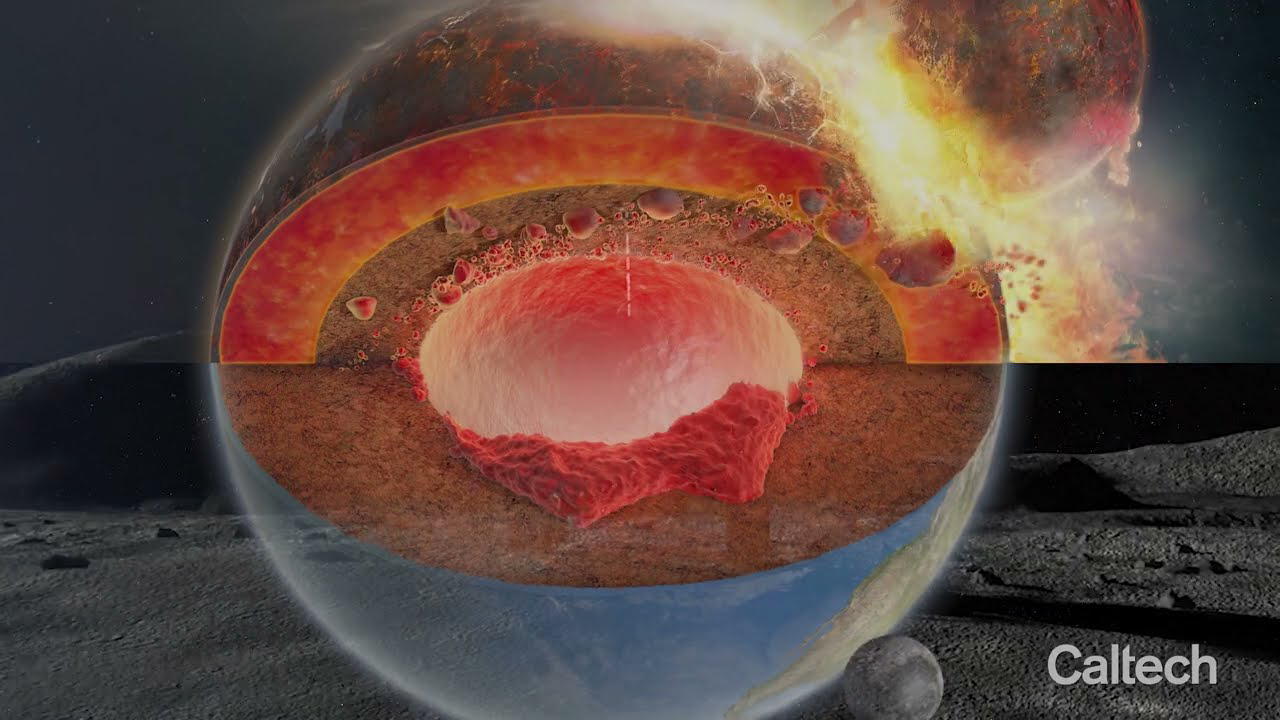In the 1980s, geophysicists stumbled upon a remarkable discovery that would unlock a longstanding mystery of our planet’s past. Deep within the Earth, beneath the African continent and the Pacific Ocean, they found two colossal, enigmatic structures known as Large Low-Velocity Provinces (LLVPs). These continent-sized blobs, each twice the size of the Moon, were composed of unusual material and were different from the surrounding mantle.
A groundbreaking study led by researchers from the California Institute of Technology (Caltech) now reveals that these baffling LLVPs may be remnants of an ancient planet that violently collided with Earth billions of years ago, the same cataclysmic impact that gave birth to our Moon. Published in the journal Nature on November 1, this research also offers a solution to another longstanding planetary puzzle: the origin of the Moon itself.
For years, scientists have speculated that the Moon formed from a colossal collision between Earth and a smaller planet, often referred to as “Theia.” However, no concrete evidence of Theia’s existence has ever been found in the asteroid belt or meteorites. This new study suggests that most of Theia was absorbed into the young Earth, contributing to the formation of the LLVPs. The remaining debris from the impact eventually coalesced to create the Moon.
The study, led by Qian Yuan, an O.K. Earl Postdoctoral Scholar Research Associate at Caltech, and conducted in collaboration with experts like Paul Asimow and Michael Gurnis, provides insights into the origin and evolution of these mysterious geological phenomena.
The LLVPs were first detected by analyzing seismic waves traveling through the Earth. These waves move at varying speeds through different materials, and in the 1980s, scientists began to notice peculiar three-dimensional variations deep within our planet. These irregularities were centered around two structures near Earth’s core, distinguished by their high iron content, which made them denser than the surrounding mantle, leading to the name “large low velocity provinces.”
Yuan’s “eureka moment” occurred during a seminar on planet formation, where a presentation discussed the lack of evidence for Theia’s whereabouts. Yuan made the connection that the iron-rich impactor could have transformed into the LLVPs. Collaborating with a multidisciplinary team, simulations supported this notion, demonstrating that the collision between Theia and Earth could have given rise to both the LLVPs and the Moon.
The simulations also shed light on why Theia’s material formed these two distinct blobs instead of uniformly blending with Earth’s mantle. The key was the distribution of energy from the impact, which predominantly remained in the upper half of the mantle, leaving the lower mantle relatively cooler than previous models had estimated. This temperature variation allowed the iron-rich material from Theia to remain relatively intact as it settled at the base of the mantle, much like the blobs of paraffin wax in a dormant lava lamp.
The next phase of research will explore how the presence of Theia’s material deep within Earth’s core has influenced the planet’s geological processes, such as the onset of subduction and the formation of the earliest continents. The study opens the door to a deeper understanding of Earth’s early evolution and the forces that shaped the planet we know today.
Journal Reference:
Qian Yuan, Mingming Li, Steven J. Desch, Byeongkwan Ko, Hongping Deng, Edward J. Garnero, Travis S. J. Gabriel, Jacob A. Kegerreis, Yoshinori Miyazaki, Vincent Eke, Paul D. Asimow. Moon-forming impactor as a source of Earth’s basal mantle anomalies. Nature, 2023; 623 (7985): 95 DOI: 10.1038/s41586-023-06589-1








